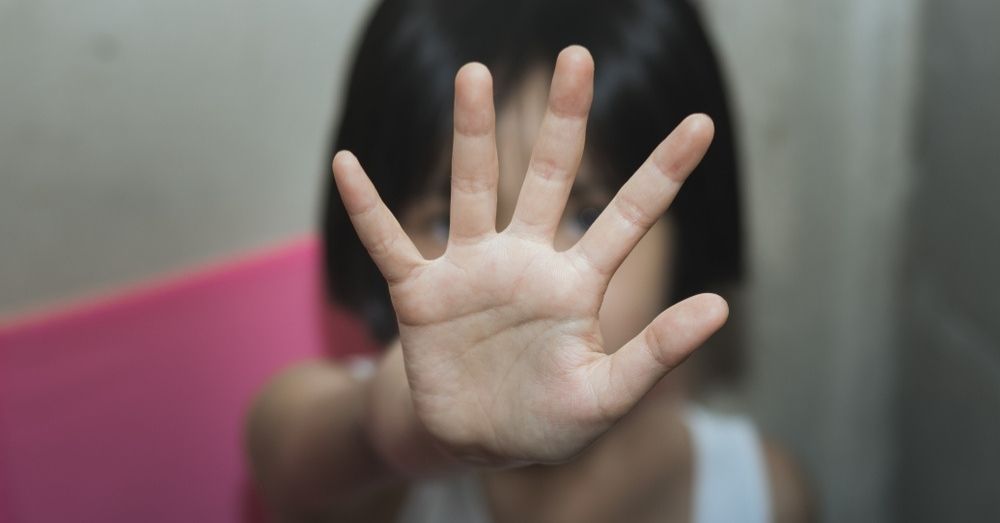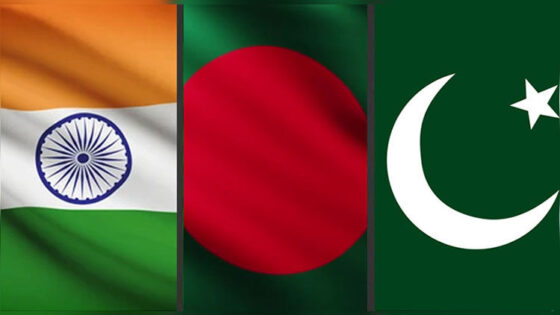Introduction
Child sexual abuse is an unpleasant reality that is progressively being documented worldwide. In India, where child sexual abuse has reached epidemic levels, it is a crime that is underreported. There has been a rise in sexually transmitted infections among children during the past two decades. Children who are sexually abused frequently have some kind of relationship with the offender. Consequently, less unclear and harsher punishment is required to address the issue of child sexual abuse. In order to effectively combat the horrible crimes of child sexual abuse and exploitation, the Protection of Children from Sexual Offences (POCSO) Act, 2012 was created. It is a comprehensive law on sexual abuse that broadens the range of sexual offenses that can be committed, mandates reporting of abuse, and establishes standards for the evaluation of victims.
A child who is protected is a potential national resource, whereas an exploited child may first become a victim before turning against them. A child requires safety, security, harmony, love, and care in order to develop fully and reach his or her potential. But it is the responsibility of all stakeholders to make the environment conducive to the holistic development of a child. As human values are changing and humanitarian principles are gaining momentum, we should consider the child to be the most fundamental and imperative element of the nation. It is our duty to work together in accomplishing the goal of the well-being of all children.
The extent of child sexual abuse in India
The issue of child sexual abuse is widespread throughout the world. There are 430 million children in India (according to the 2011 Census), and issues like poverty, a lack of basic amenities for a better standard of living, and a lack of education make the issue of child sexual abuse much worse. The National Crime Records Bureau (2016) findings made it abundantly evident that child rape was involved in 36,022 (34.4%) of the cases recorded under the Protection of Children from Sexual Offenses Act of 2012. The highest percentages of child abuse instances (15.3%, 13.6%, and 13.1%, respectively) were reported in Uttar Pradesh, Maharashtra, and Madhya Pradesh.
According to a recent study on the frequency of sexual abuse among adolescents in Kerala, 36% of males and 35% of girls had suffered sexual abuse at some point in their lives. Shocking findings from a comparable survey undertaken by the Government of India on 17,220 children and adolescents to determine the prevalence of sexual abuse indicated that every second child in the country was sexually molested; among them, 52.94% were boys and 47.06% were girls. Assam reported the most cases of sexual abuse (57.27%), followed by Delhi (41%), Andhra Pradesh (33.87%), and Bihar (33.27%).
POCSO ACT 2012
The Protection of Children from Sexual Offences (POCSO) Act 2012 has been drafted to strengthen the legal provisions for the protection of children from sexual abuse and exploitation. According to POCSO Act 2012, a “child” is a person who has not completed the age of 18 years. The act is gender-neutral, providing protection to children of both sexes.
According to Chopra (2015), the POCSO Act prescribes these sexual offenses against children: Penetrative sexual assault is when a person inserts a penis, or any other object into the body of a child or asks the child to do so. Aggravated penetrative sexual assault, is when a trusted person or any government employee inserts a penis, or any other object into the body of a child or asks the child to do so. Sexual assault is when a person with sexual intent touches the child’s private body parts or asks the child to do so. Aggravated sexual assault is when a trusted person or any government employee with sexual intent touches the child’s private body parts or asks the child to do so. A person is said to commit sexual harassment upon a child when such person is with a sexual intent comment or follow or gaze a child or shows any pornography to the child using a child for pornographic purposes.
Salient features of the POCSO Act
- “Children” according to the Act are individuals aged below 18 years. The Act is gender-neutral.
- Different forms of sexual abuse including but not limited to sexual harassment, pornography, and penetrative & non-penetrative assault are defined in the Act.
- Sexual assault is deemed to be “aggravated” under certain circumstances such as when the child is mentally ill. Also when the abuse is committed by a person in a position of trusts such as a doctor, teacher, policeman, or family member.
- Adequate provisions are made to avoid re-victimization of the Child at the hands of the judicial system. The Act assigns a policeman to the role of child protector during the investigation process.
- The Act stipulates that such steps must be taken which makes the investigation process as child-friendly as possible and the case is disposed of within one year from the date of reporting of the offense.
- The Act provides for the establishment of Special Courts for the trial of such offenses and matters related to them.
- Under section 45 of the Act, the power to make rules lies with the central government. To monitor the implementation of the Act, the National Commission for the Protection of Child Rights (NCPCR) and State Commissions for the Protection of Child Rights (SCPCRs) have been made the designated authority. Both are statutory bodies.
- Section 42 A of the Act provides that in case of inconsistency with provisions of any other law, the POCSO Act shall override such provisions.
- The Act calls for mandatory reporting of sexual offenses. A false complaint with intent to defame a person is punishable under the Act.
- The act was amended in 2019 to increase the minimum punishment from seven years to ten years. It further adds that if a person commits penetrative sexual assault on a child below the age of 16 years, he will be punished with imprisonment between 20 years to life, with a fine.
- The Act defines child pornography as any visual depiction of sexually explicit conduct involving a child, including photographs, video, digital, or computer-generated images indistinguishable from an actual child. The Act is critical as it clearly defines child pornography and makes it punishable. The amendments also penalize the transmitting of pornographic material to children and propose synchronizing it with the IT Act.
- The Act enhances punishment for sexual offenses against children with a provision for the death penalty.
Challenges and controversies
Child sexual abuse is a multidimensional problem having legal, social, medical, and psychological implications. There are certain drawbacks in the law around the following issues:
Consent: The POCSO Act is silent in this situation and does not provide any specific guidance if the child or teenager refuses to undertake a medical examination but the family or the investigating officer insists. The matter of permission in such situations has to be clarified immediately. However, in order to save the child’s life, emergency care must be started without addressing any concerns about legality or permission.
Medical evaluation: In accordance with Section 27(2) of the POCSO Act, a female physician is required to conduct a medical evaluation of a female child or teenage victim. The available medical officer must, nevertheless, offer emergency medical care according to the law. In contrast, the Government medical officer on duty is required by the Criminal Law Amendment Act and Section 166A of the Indian Penal Code to examine the rape victim without fail. This ambiguous legal situation develops since there are no female doctors accessible.
Cost of treatment: The medical community and institution are legally required to give survivors free medical care under the law. The State should be responsible for covering the costs if there are inadequate facilities or if expensive procedures are necessary; otherwise, the hospital could give shoddy medical care or might deny the survivor thorough care.
Consented sexual intimacy: The POCSO Act of 2012 considers sexual contact between two adolescents or between an adolescent and an adult to be unlawful because no exception has been made to the law’s prohibition on sexual contact with anyone under the age of 18, regardless of consent, the gender, marital status, or age of the victim or the accused. To avoid prosecution under the POCSO Behavior of 2012, it is recommended that any consensual sexual act that may be considered penetrative sexual assault should not be a crime when it occurs between two consenting minors. Contrarily, the most recent amendment to the Indian Penal Code regarding rape laws in 20138 states clearly that the age of consent for sex has been fixed at 18, and as a result, anyone who engages in consensual sex with a child under the age of 18 can be charged with rape, potentially leading to an increase in rape cases. Obstetricians and gynecologists must record all instances of MTP (medical termination of pregnancy) carried out on children, which is another grave consequence (below 18 yr).
Child marriage: According to the POCSO Act of 2012, child marriage and the consummation of child marriage are both prohibited. Even while child marriage is against the law in India under secular law, it is permitted under some personal laws, which makes issues more complicated10. When the legislation is up for revision, these problems need to be addressed.
Training: The POCSO Act, 2012 has to be taught to medical, teaching, judicial, legal, and law enforcement institutions immediately. The major obstacles are finding information, monitoring it, and raising public awareness. One of the key factors in delivering comprehensive care and justice is training all the stakeholders. Additionally, there is an urgent need to teach all medical students and primary care physicians the delivery of child-friendly interviews, systematic assessments, evidence gathering, prophylaxis for HIV and STDs, family counseling, and frequent follow-up.
Role of mental health professional: Child sexual abuse cases seldom present with definite symptoms of genital trauma11. As a result, evaluating a victim of child sexual abuse involves specialized knowledge and methods in history collection, forensic interrogation, and medical examination. When the youngster is being questioned in court, the involvement of the mental health expert is vital. There can be both immediate and long-term negative effects on a person’s mental health from child sexual abuse. In order to provide the victim with follow-up care in the event that psychiatric disorders emerge, mental health professionals must offer individual counseling, family therapy, and rehabilitation12.
Reporting: It is common knowledge that most instances of child sexual abuse go unreported. Furthermore, for many family members as well as survivors, recognizing and disclosing child sexual abuse is a very difficult and highly personal choice. Both survivors and family members experience feelings of embarrassment and humiliation as a result of the act remorse, rage, frustration, and emotional distress. They are kept mute and subjected to prolonged torment out of fear of becoming victims again due to medical examinations, the criminal justice system, and uninformed society members.
Amplification Resulting from digital technologies
Digital and mobile technology have increased child exploitation and abuse. Online bullying, harassment, and child pornography are just a few examples of the newer types of child abuse that have evolved.
Ineffective legislation: Although the Government of India passed the Protection of Children against Sexual Offences Act 2012 (POCSO Act), it has not succeeded in preventing the sexual abuse of children. There are several explanations for this. low rate of conviction rate:If one averages over the last five years, the rate of convictions under the POCSO legislation is just approximately 32%, and 90% of the cases are still ongoing.
Judicial Delay: The Kathua Rape case took 16 months for the primary accused to be found guilty, despite the fact that the POCSO Act expressly states that the full trial and conviction procedure must be completed in one year.
Unfriendly to Children: Difficulties in determining the child’s age. Particularly rules that prioritize biological age rather than mental age.
Recommendations
Child’s Interest First: A child shouldn’t be subjected to needless suffering only to guarantee a successful prosecution, especially when it may be prevented by connections to the juvenile justice system.
Training for Police Officers: When it comes to crimes against minors, especially cybercrime, investigative authorities must continually improve their capabilities. A module on “offenses against children” should be included in the curriculum of police academies and training programmes, including refresher training programmes, so that students can become familiar with child-related laws, such as the POCSO Act, their goals and procedures, and investigative and forensic techniques.
Training for Special Court Judges, Special Public Prosecutors, and Legal Aid Attorneys: When dealing with and assessing the evidence of a child, the Special Courts employ the same standards and competencies as utilized for adults, which undermines the goals of the POCSO Act. It is essential that the Special Courts investigate the child’s condition with the help of the child’s attorney and/or support person and do not take the child’s deposition at face value.
Infrastructure for Special Courts must be improved, resources must be appointed, and POCSO Act-mandated special procedures must be followed
Increase the number of Special Courts and equip them with the necessary facilities and personnel.
Conclusion
A child’s psyche is scarred by sexual abuse, which causes depression, emotional anguish, and mental impairment. POCSO Act unquestionably includes protections against child pornography and sexual assault. The penalties for sexual offenses against children have grown more severe as a result of the change in 2019. However, India still needs to do far more to reduce child sex crimes.
References
-
Seth, R., Srivastava, R.N. Child Sexual Abuse: Management and prevention, and protection of children from Sexual Offences (POCSO) Act. Indian Pediatr 54, 949–953 (2017). https://doi.org/10.1007/s13312-017-1189-9
-
https://byjus.com/free-ias-prep/pocso-act/
-
Renu, R., & Chopra, G. (2019). Child Sexual Abuse in India and the Protection of Children from Sexual Offences (POCSO) Act 2012: A Research Review. Integrated Journal of Social Sciences, 6(2), 49-56. Retrieved from http://www.pubs.iscience.in/journal/index.php/ijss/article/view/892/581
-
Sarkar, A. (2016). Child abuse̶ an invisible crime in India. International Education and Research Journal. Vol. 2. Issue 6.
-
Chopra, G. (2015). Child Rights in India: Challenges and Social Action. Springer (India) Pvt.
-
Moirangthem S, Kumar NC, Math SB. Child sexual abuse: Issues & concerns. Indian J Med Res. 2015 Jul;142(1):1-3. doi: 10.4103/0971-5916.162084. PMID: 26261159; PMCID: PMC4557243.
-
POCSO Act: Landmark Cases and amendment: https://blog.finology.in/Legal-news/pocso-act
-
https://www.drishtiias.com/daily-updates/daily-news-analysis/protection-of-children-from-sexual-offences-1
-
Ali, B. (2018). Implementation of the POCSO Act: Goals, Gaps and Challenges (No. id: 12741).






Leave a Reply
You must belogged in to post a comment.